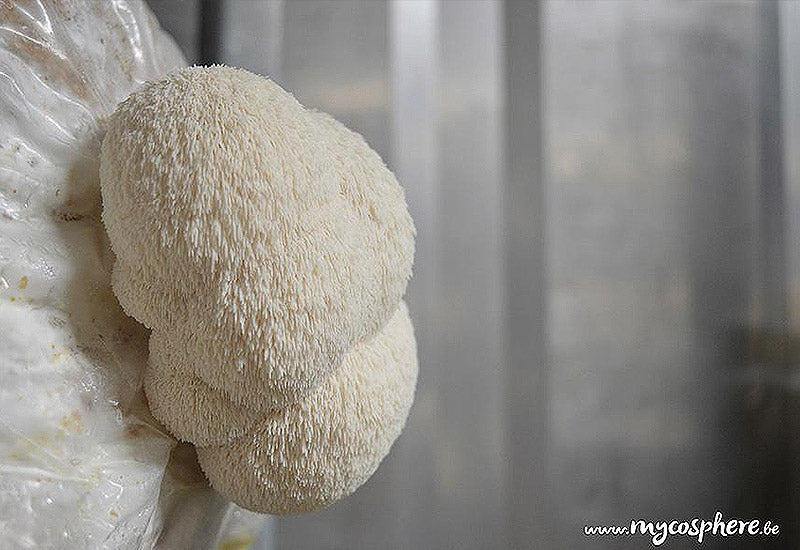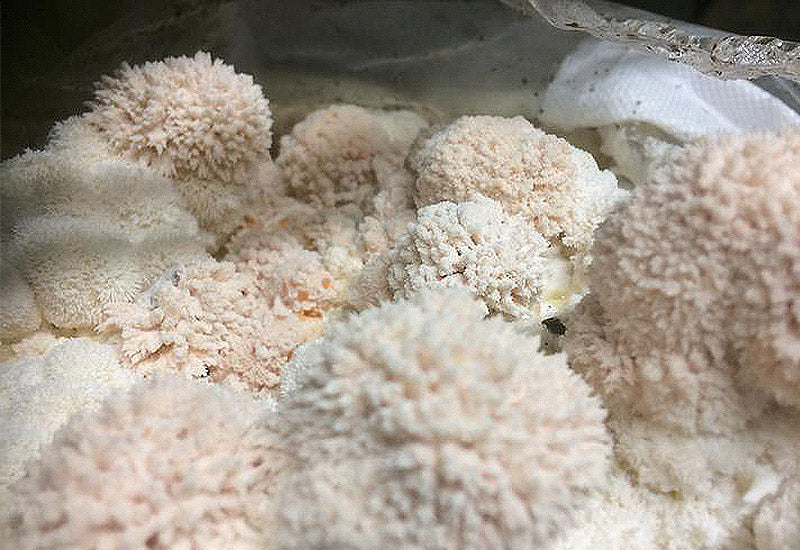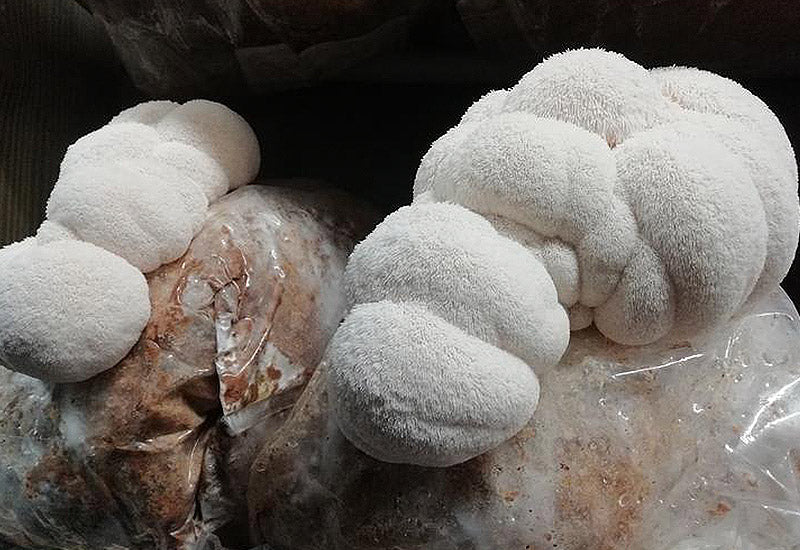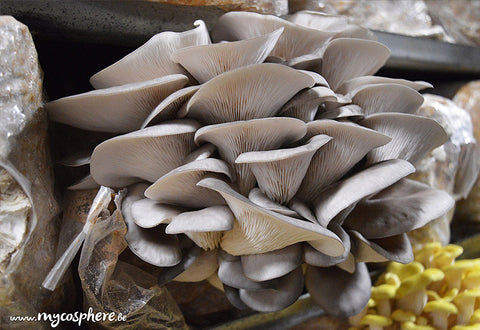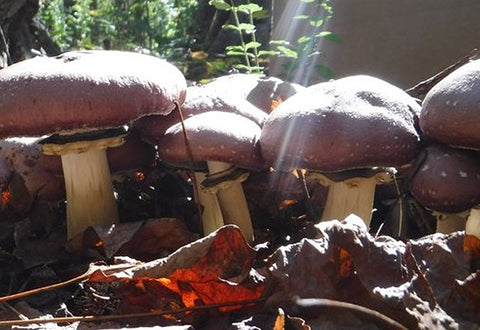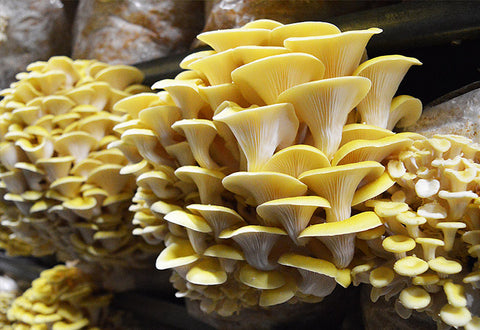Mycelium on organic Lion's Mane grains
- 🍄 MYCELIUM ON LION'S MANE GRAINS : Hericium erinaceus, also known as yamabushiitake, has been traditionally used in Asia for centuries.
- 🌱 EXCELLENT INCUBATION : Lion's Mane mycelium is known for its fast incubation and its ability to produce regular and abundant harvests.
- 🍽️ TASTE QUALITY : Delicate flavor reminiscent of seafood, perfect for various culinary dishes.
- 🌍 LOCAL AND ORGANIC PRODUCTION : Certified "BE-BIO-01" by Certisys, guaranteeing an environmentally friendly and high-quality product.
-
+- 2 weeks. Consult all our deadlines
For dried mushrooms or Lion's Mane powder, click here.
The Lion's Manes (Hericium Erinaceus, Hedgehog Hydne, White Pom Poms, Lion's Mane or yamabushiitake) offer unique flavors reminiscent of seafood and coconut, with a texture close to meat. They are easily eaten in slices and sautéed like most other mushrooms.
These mushrooms, relatives of the hedgehog mushrooms, produce hydnes (small white spines) when they reach maturity. We harvest them before the hydnes exceed 5 mm to preserve their taste qualities and extend their shelf life. This rare and protected variety cannot be harvested in the wild.
Incubation is fast, about 10 days, with fruiting taking about 2 weeks before the first harvest. Mainly cultivated on sawdust, they adapt to a wide range of temperatures. Although they prefer indoor cultivation, some also grow them outdoors.
💊 Rich in beta-glucans, hericenones, ergosterol, and essential amino acids, the hedgehog mushroom is valued for its natural components with interesting properties as part of a varied and balanced diet.
(1) : Read more about the benefits of lion's mane
🔬 This is grain mycelium, to produce your own substrates. If you are new to mushroom cultivation, we recommend ordering our ready-to-grow logs.
❄️ The mycelium of Lion's Mane is fine and fragile, but vigorous. It is best to use it within a week of receipt, keeping it refrigerated.
Mycelium storage: 1 month in the refrigerator.
👉 See also: "How to use our myceliums"
Our quality commitment:
We produce our myceliums under laboratory conditions, which guarantees purity of strains and optimal quality.
We produce our myceliums in a 100% organic way and all our products are certified "BE-BIO-01, Agriculture Belgium" by CERTISYS.

🌱 Growing conditions
The Lion's Manes can grow all year round at temperatures ranging from 10 to 25°C. For fruiting, avoid drafts and temperature fluctuations. They appreciate high humidity but do not tolerate being wet directly.
🛠️ Substrates
These mushrooms are generally cultivated on a substrate based on enriched wood sawdust, pasteurized or sterilized. Pasteurized straw and other lignocellulosic materials can also be used as alternatives.
We recommend our ready-to-use substrate, particularly suited for lignicolous varieties.
📊 Cultivation parameters
Inoculation: 5-10% grains/wet substrate
| Phase | Temperature | Moisture | Duration | CO2 | Fresh air | Light |
|---|---|---|---|---|---|---|
| Incubation | 21-24°C | - | 10-14 days | - | - | n/a |
| Primordia initiation | 10-16°C | 95-100% | 7-15 days | 500-700 ppm | 4-8 volumes/h | 500-1000 lux |
| Fruiting | 12-25°C | 85-95% | 4-8 days | 500-1000 ppm | 4-8 volumes/h | 500-1000 lux |
📚 This data comes from the book "Growing Gourmet and Medicinal Mushrooms" by P. Stamets. It is provided for informational purposes only, as each mushroom grower has specific cultivation conditions, so individual variations may occur.
📈 Productivity
The fruiting bodies form hairy balls ranging in size from a golf ball to a large tennis ball, depending on the size of the substrates.
Yield: 200-250 g of fresh mushrooms per 1 kg of wet substrate over 2-3 harvests.

